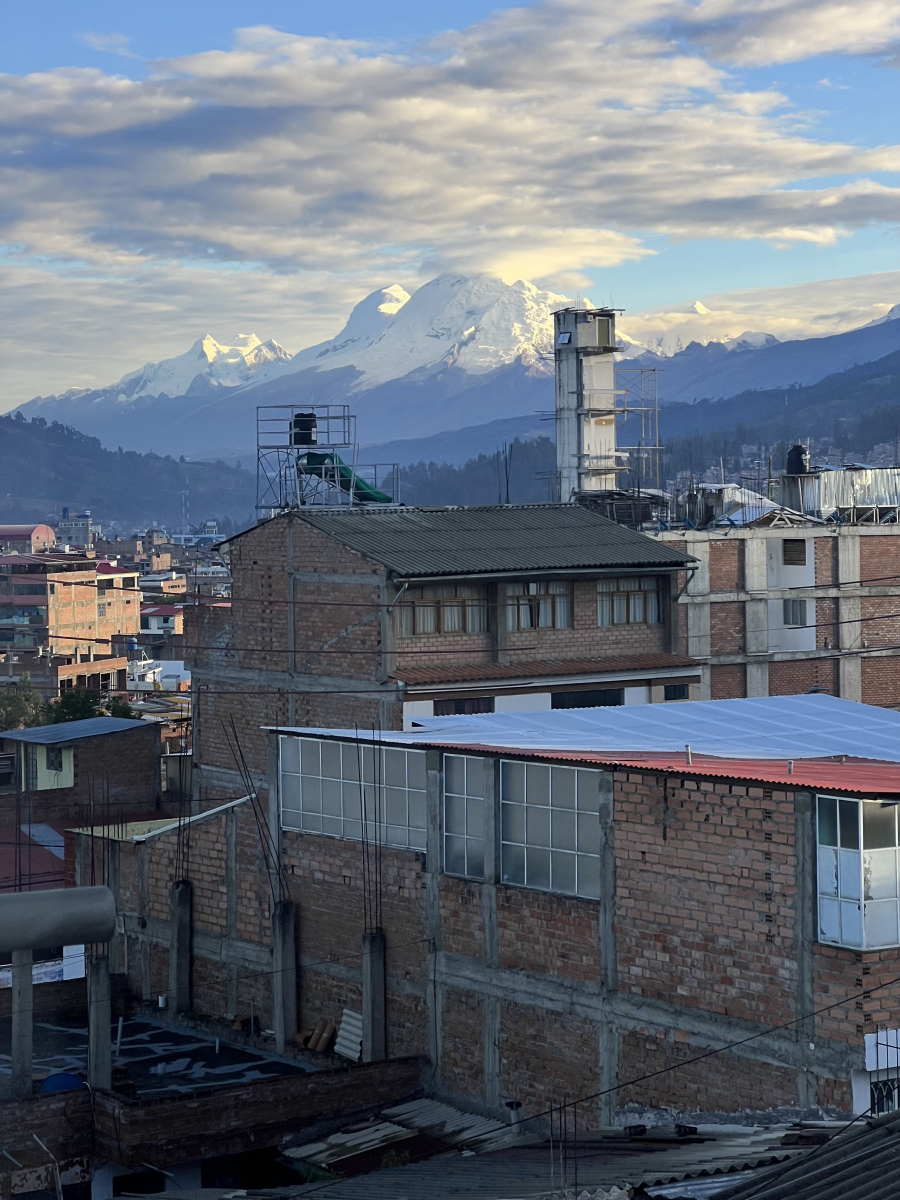When I arrived in Huaraz one foggy morning in early May, I wasn’t expecting much from the city itself. After all, no one comes here for the town. What draws people in is what lies just beyond it: a skyline serrated with 6,000-meter peaks, turquoise glacial lakes, and one of the most extraordinary high-altitude landscapes on the continent.
Huaraz isn’t charming in the way Cusco or Arequipa might be. It’s a little rough-edged, a little concrete-heavy — but it does have its own rhythm. Maybe it’s the early morning stillness, when Huascarán appears crisp and pale against the sky. Maybe it’s the smell of rain on dusty sidewalks, or the buzz of hikers prepping gear in the plazas. For me, after two weeks of working weekdays and hiking on weekends, Huaraz became something else entirely: a doorway into a different kind of Peru — rugged, high-altitude, and far from the well-trodden southern circuit.
This Huaraz travel guide is your deep dive into the city, the hikes, and the mountain mindset — from bus routes and altitude tips to glacier climbs and where to find the best post-hike burger in town.
Is Huaraz Worth Visiting?
Let’s address the obvious: Huaraz isn’t pretty. Not in the postcard sense. Compared to the Spanish-colonial grandeur of southern Peru, it can feel a little utilitarian, even harsh — a city rebuilt after a devastating 1970 earthquake, with function taking priority over form.
But then the clouds part.
And there it is: Huascarán. Snow-laced ridgelines. Sharp granite spires etched into a cobalt sky. It’s not Huaraz itself that makes the journey worthwhile — it’s what surrounds it. The Cordillera Blanca is quite literally the highest tropical mountain range in the world. Step outside your guesthouse and you’re already halfway to altitude. Spend a few days here, and the rhythm of the city starts to make sense: early mornings, muddy boots, and that distinct buzz of pre-hike energy. You’re not here for colonial charm or postcard-perfect streets — you’re here for the altitude, the rawness, and the mountains just beyond the edges of town.
Where is Huaraz?
Huaraz is tucked in Peru’s Andean highlands, about 400 km north of Lima. It’s the gateway to the Cordillera Blanca and Huascarán National Park, home to some of the best alpine hiking and climbing in South America. The town sits at a dizzying 3,052 meters (10,013 feet), which means you’ll want to take it easy for your first couple days.
Best Time to Visit Huaraz
Dry season (May to September) is your best bet, especially if you’re planning to hike or do any multi-day treks. Skies are generally clear, and trail conditions are optimal.
- May & June: Lush landscapes, fewer tourists
- July & August: Peak trekking season, but busiest
- September & October: Dryer trails, quieter vibes
- Rainy season (Nov–April): Avoid if you’re trekking — trails can be washed out, and visibility is poor.
We were there in early May and had a mix of sunny days and classic rainy afternoons. For most hikes, we still managed fine with layers and a rain shell.
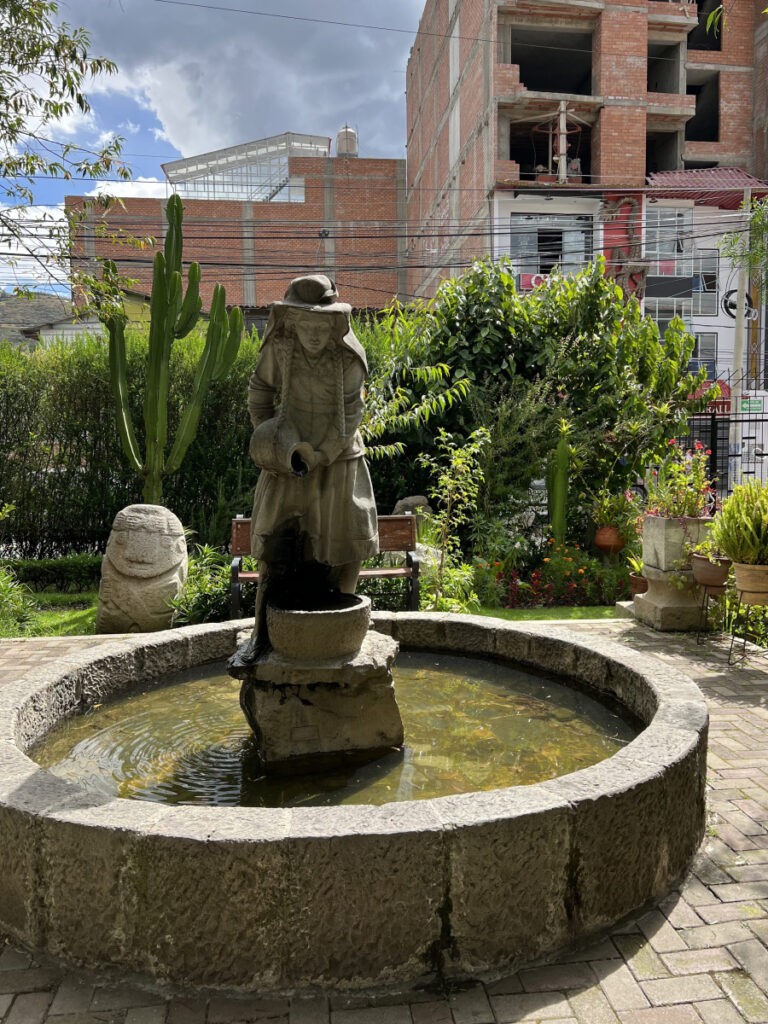
How to Get to Huaraz
Getting to Huaraz is half the adventure.
Because we were coming from northern Peru, we took the long route: Piura → Trujillo (7 hrs), then Trujillo → Huaraz (9 hrs). Afterward, we left via Huaraz → Lima (8 hrs). If that sounds insane, let me tell you: the first-class bus seats are honestly comfier than economy airline seats — and the tickets are cheap.
But if you’re starting from a more typical route like Lima, it’s much easier. The most common option is an overnight bus from Lima to Huaraz, which takes around 7–8 hours. These run daily, with companies like Cruz del Sur and Linea offering multiple departure times and seat classes.
There’s also a small airport near Huaraz — Comandante FAP Germán Arias Graziani Airport (ATA). LATAM operates direct flights from Lima to Huaraz, and connecting routes are available from Cusco and Arequipa via Lima.
From Cusco or Arequipa, your best bet is to fly to Lima and connect from there, or take a bus to Lima followed by the overnight route.
Expect to pay 40–80 soles per leg for bus travel depending on the class and company. Major carriers include Cruz del Sur, Rodriguez Tours, and Linea.
You can easily compare routes, prices, and departure times across multiple companies using platforms like BusBud and RedBus.
Where to Stay in Huaraz
We stayed in an Airbnb for two weeks (~€377 total) — clean, no-frills, and with a living room view of Huascarán on clear mornings. If you’re staying a shorter time or want a more polished setup, Huaraz has a mix of simple guesthouses, mid-range hotels and boutique hotels.
Best Things to Do in Huaraz (Besides Hikes)
Visit the Regional Museum of Ancash
I loved this more than expected. Ancient pottery, skulls, and stone sculptures, plus a peaceful outdoor sculpture garden. Quiet, uncrowded, and gives context to the region’s pre-Columbian cultures.

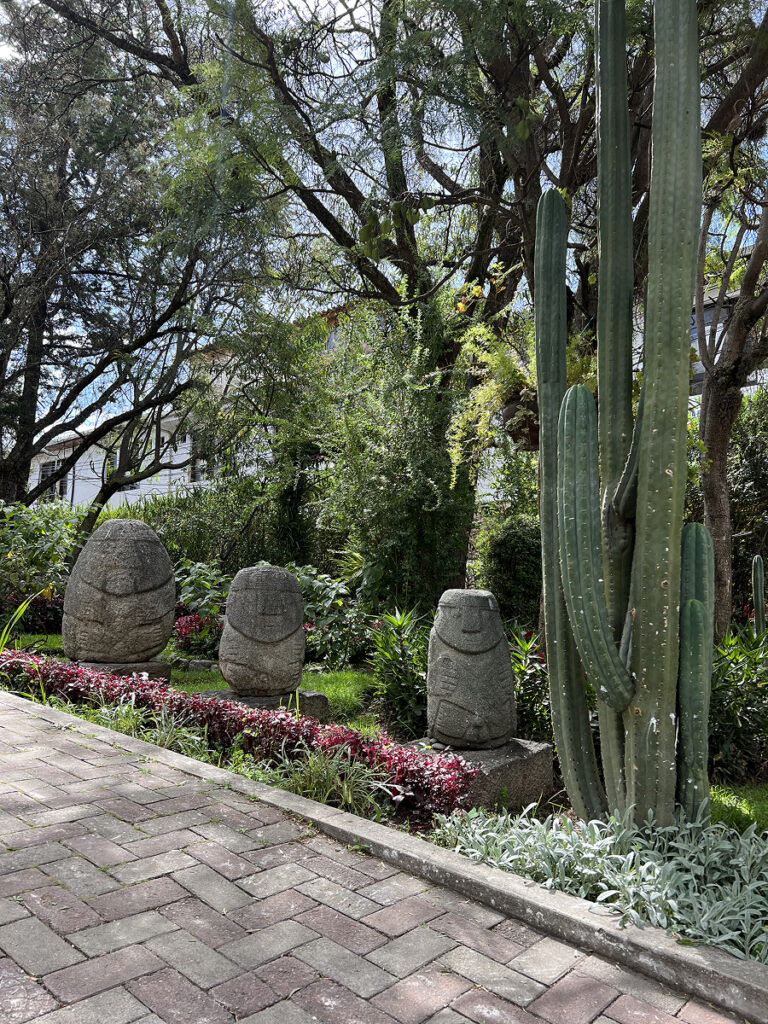
Wander the Plaza de Armas
Nothing fancy, but it’s the center of local life. Come here on a Sunday or after a rain shower and take a moment to relax and watch the town settle into its rhythm.
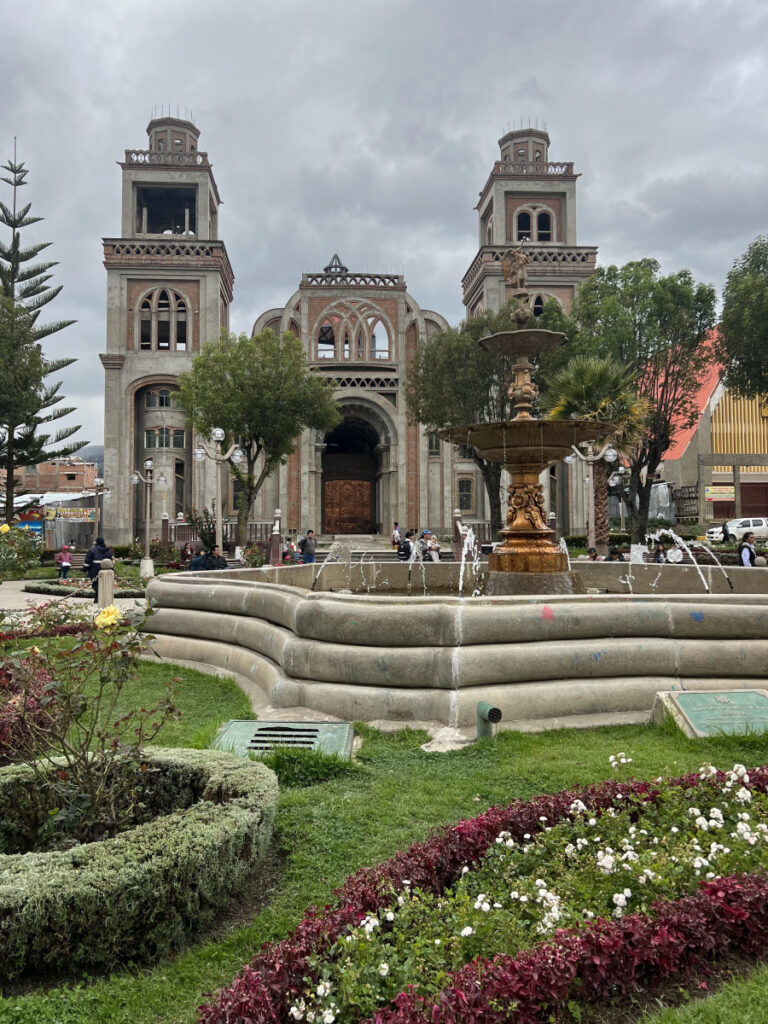
Explore the Templo de Wilcahuain
We didn’t make it there ourselves, but the Templo de Wilcahuain — a pre-Incan archaeological site just outside Huaraz — is often recommended. It’s one of the oldest structures in the region and offers a glimpse into the ancient Wari civilization, plus sweeping views of the valley if you go on a clear day.
Soak in the Views from Your Airbnb
Seriously. If you score a view-facing apartment, just watch the sunrise over Huascarán with a coffee. Magic.
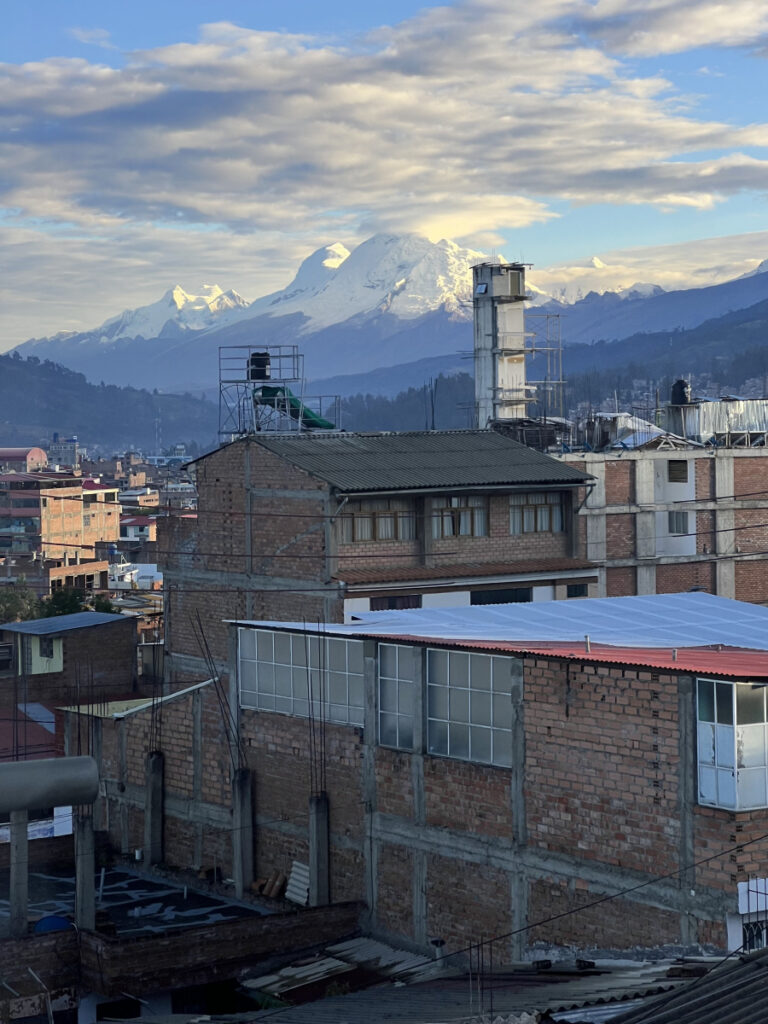
Best Places to Eat in Huaraz
Huaraz isn’t a culinary destination — but you can still eat well here. Here are a few spots I tried and loved:
Monster Burger
Hands down one of the best burger I had in Peru. Limited menu, but so good. Juicy, perfectly seasoned, and satisfying after a long hike.

Cafe Andino
A go-to for travelers. We had pisco sours and salchipapas (fries with sausages) on a rainy afternoon. The covered patio upstairs has panoramic views — even if the town looks a bit sad on grey days.
El Fogon
Needed a break from seafood after time in Piura, and this hit the spot. Steak was solid, and the vibe was laid-back.
Hiking in Huaraz
Hiking is why most people come to Huaraz — and it delivers. Whether you’re into glacial lakes, moody weather, or thin air that makes you question your life choices, the trails here are unforgettable.
Here are a few I managed to squeeze in between rainy afternoons and remote work — plus the ones I had to save for next time:
Laguna 513
Even in the rain, this hike was stunning. The blue-grey water looked dramatic under stormy skies. Bring a shell and embrace the weather.
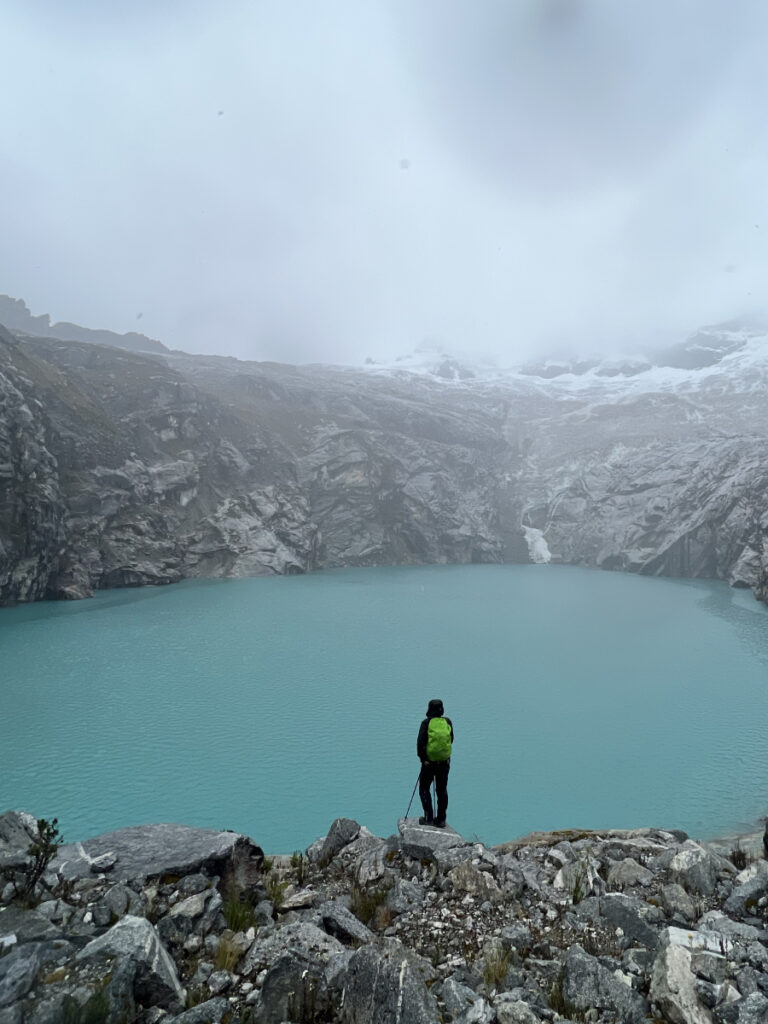
Laguna Radian
Shorter, easier, and perfect for a picnic at the lake. Great views of the Cordillera Blanca in the distance.
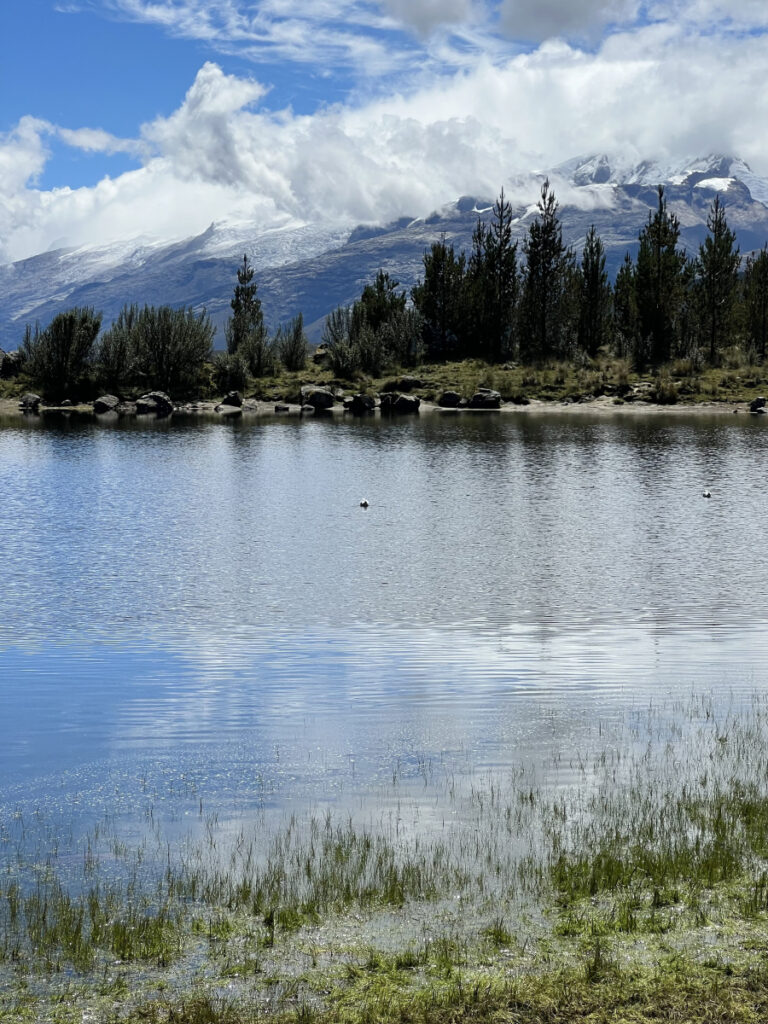
Hikes We Missed Due to Weather
- Laguna Churup
- Laguna Llaca
- Laguna Parón
Truthfully? By the end of our Peru trip, we were a little laguna-fatigued — but they’re still beautiful if you pace them.
Try a Glacier Climb: Pico Mateo
If you’re looking to try something beyond hiking — without committing to a full-scale expedition — consider a guided glacier climb. Pico Mateo, a 5,000m+ glaciated peak just outside Huaraz, is one of the most accessible ways to experience mountaineering in the Cordillera Blanca.
It’s often called an “easy” climb, but make no mistake — you’ll be wearing crampons, roped to a guide, and crunching your way across real glacier ice. We booked a last-minute tour to Pico Mateo and it ended up being a highlight of the trip. The early morning light across the peaks, the sheer silence of the snow, and the feeling of being truly up there.
Whether you’re testing the waters for bigger climbs or just want one epic day in the mountains, it’s a memorable introduction to the high-altitude world of the Cordillera Blanca.
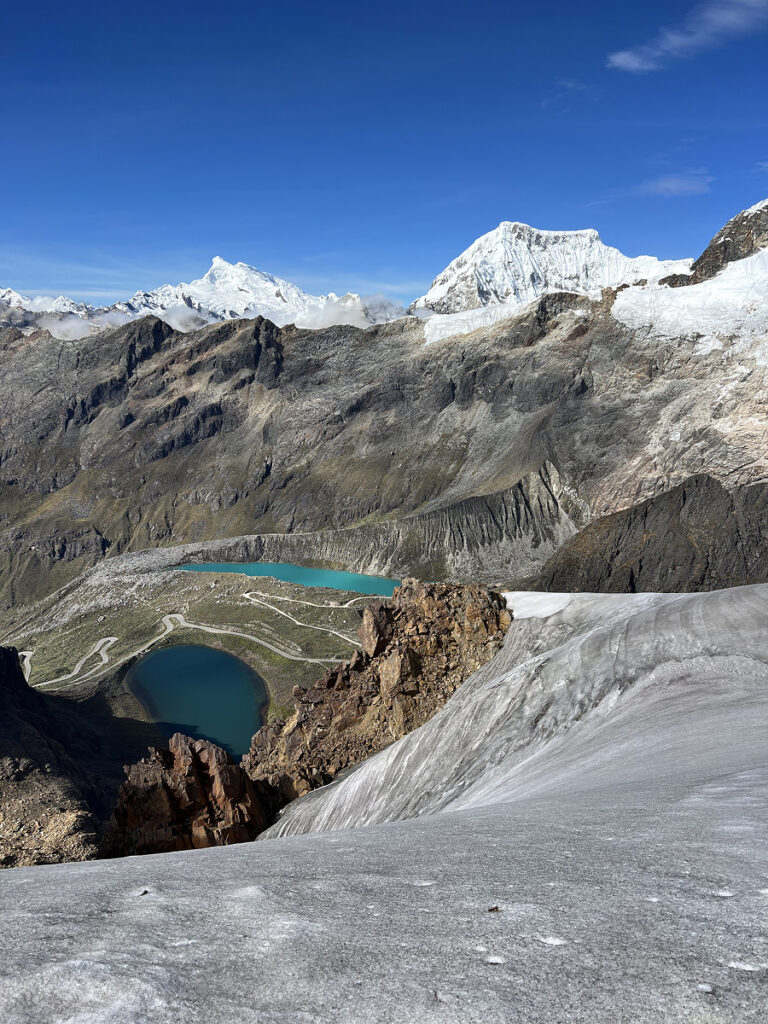
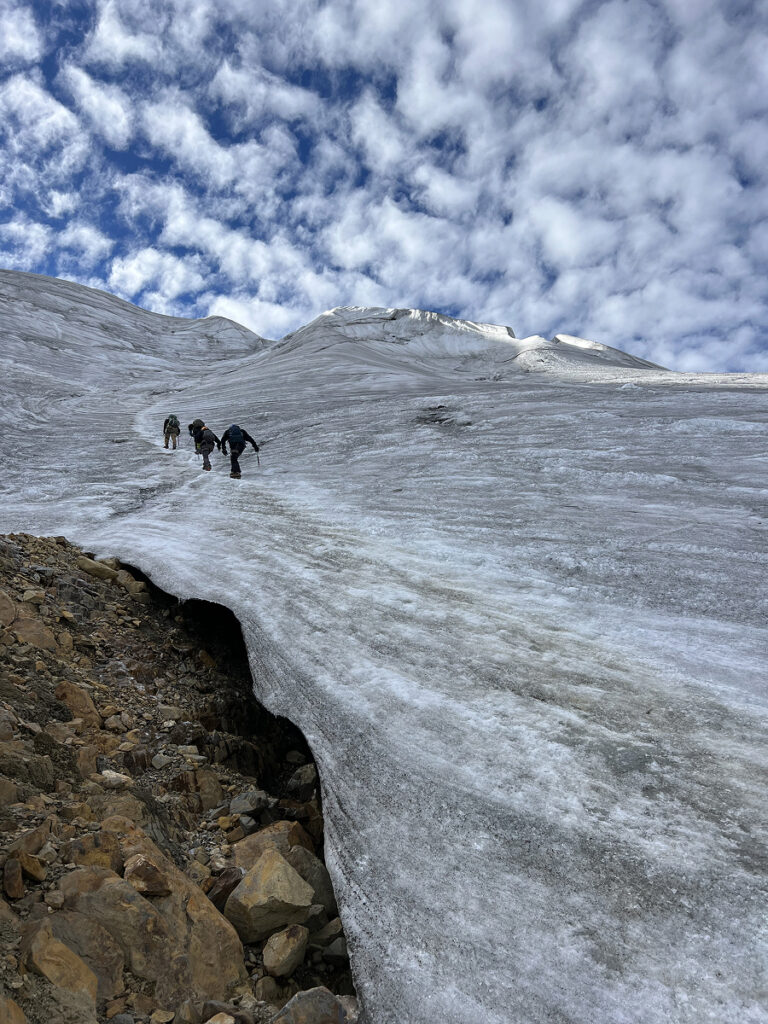
Altitude in Huaraz: What to Expect
At over 3,000 meters, altitude is no joke here. Give yourself 2–3 days to acclimate before doing anything too ambitious.
Tips:
- Stay hydrated
- Walk slowly your first days
- Try coca tea (but don’t expect miracles)
- If you feel dizzy or nauseous, rest. Don’t push it.
Final Thoughts
Huaraz may not charm you right away — but it may humble you. It’s not polished. It’s not easy. But it’s real and raw, and the mountains here are just part of the backdrop — imposing, familiar, and unapologetically high.
I didn’t get to do the Huayhuash trek or Santa Cruz this time — thanks, limited PTO — but they’re at the top of my list for when I return. And I will return.
If you’re into hiking, climbing, or just want to feel small in the best possible way, Huaraz is worth every night bus.
Further Reading
- Laguna Radian Hike Guide: Easy Acclimatization Trail Near Huaraz
- Peru Travel Guide: Best Places to Visit + How to Plan Your Trip
Frequently Asked Questions About Huaraz
Is Huaraz safe for travelers?
Yes — overall, Huaraz is considered safe for travelers, especially those sticking to popular areas. Like anywhere, use common sense: avoid walking alone late at night, keep valuables discreet, and be cautious on trailheads.
Do you need to acclimate before hiking in Huaraz?
Absolutely. At 3,000+ meters, you’ll feel the altitude. Plan at least two full days of light activity or acclimatization hikes before tackling anything strenuous like Laguna 69 or Pico Mateo.
How many days should I spend in Huaraz?
If you’re hiking, plan for at least 5 days: two for acclimatization, two for day hikes or an overnight trek, and one buffer for rest or weather delays.
Can you visit Laguna 69 without a guide?
Yes, but most travelers choose to go with a day tour for ease and transport. If you’re experienced, you can arrange a taxi and hike independently — just be prepared for early hours and steep altitude.
Is Huaraz worth visiting if I don’t plan to hike?
It’s possible, but the town’s real draw is the outdoors. If you’re not planning to hike or explore the Cordillera Blanca, Huaraz might feel underwhelming.

